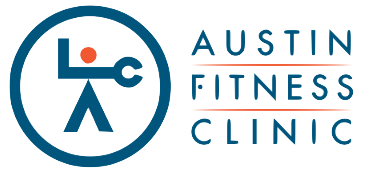“If you’re gonna’ be dumb, you’d better be tough”
I once lost a client because I would not allow him to perform this exercise…
I heard this quote countless times from a young age, and never listened until my mid-thirties. So many things I did in my youth were rationalized for being the “tough” way. My 45 year-old self looks back and smiles. I wasn’t being tough…just dumb.
Life experience changes the way we approach many things: relationships, money, life balance, even happiness. We hope to get better at these challenges and make our lives more fulfilling.
Why, then, do we not apply the same logic to our fitness training? In an effort to stay young and perform at a youthful level, we train the exact same way we always did when we were young. It’s what we know. It’s the tough way. It hurts us.
Harder the Better
The majority of what we achieve from training hard at a young age (physique, athletic performance, stress management) isn’t a result of our hard training. Rather, these achievements occur despite that training. Usually, the first 30% of our exercise volume is beneficial, and the remaining 70% is simply overtraining. Our young brains and bodies get addicted to the hormones released and the sensations felt when we work hard, so we keep doing it. Like any addiction, we have to work harder, go further, and lift heavier to get the same hit. I prided myself in being too sore to walk or raise my arms because I felt like I had accomplished something. I was an idiot.
Initially, overtraining worked very well for me: my body responded well and adapted physically, and my anxiety/depression was held at bay by the fatigue and hormonal response to extreme exercise. Then I turned 35, and everything changed. My body stopped responding to high volume and high impact. My depression kept flaring up, and exercise could no longer stabilize my emotions. What did I do? I trained harder. I started to lose weight and get irritable. Finally, BAM!, my body had had enough. My intestines twisted and it took two surgeries to get me straightened out. A lengthy convalescence gave me plenty of time to reflect on what happened and how to live a healthier life.
Hyper-extension is such a common compensation to lift heavier
VS.
Working the same muscles with proper/safe posture
Older and Smarter
My 2-year recovery was slow. I ramped up my exercise volume as quickly as my body would allow, stopping at 30% of the volume I’d been doing before. My plan was to give up some of the strength and fitness I possessed pre-surgery in order to let my body heal, and I’d made peace with that trade-off. The opposite happened. By the end of that 2-year recovery I was performing better in the gym and on the court than ever. My injuries were far less frequent and my body felt amazing. I was even keeping my depression at bay with only 30% volume! I was suddenly the oldest guy playing in my basketball league, and one of the only players not injured. My body was no longer being constantly broken down, and had time to heal.
Heavy loads across the lumbar spine
VS.
Glute and Leg strengthening with core and balance
Why Not My Clients?
This discovery changed the way I approach my clients’ workouts. People’s lives are already high-impact. By the time I see most clients they have worked 60 hours, shuttled kids to 12 soccer games, slept 2 hours a night, and counseled 3 crying employees…all in the same week. Why would I pound on them even more? Instead, we work on building their bodies up, making their tissue more resilient. Clients responded immediately. My people felt good after working out, not beaten-down, and their workouts were far more enjoyable. I finally figured out what trainers for athletes like Lebron and Brady already had: if life and sport constantly beat on my client, why would I give them more of the same in the gym? I didn’t have my own book with high-res pictures of Tom Brady making an “O” face, but my clients got the benefit just the same. That shift changed my career.
I could actually improve clients’ quality of life and health rather than sacrifice those things for aesthetics and weight loss. What good do high-impact workouts do if the client is too injured to keep training? Gray Cook is famous for quotes like “If you load disfunction, it gets worse”. I finally got it. If my clients were resilient and injury-free, their lives improved: they slept more, had less pain, and just felt better. Then, the aesthetic changes they wanted came with time. When I explain this methodology to prospective clients, the response is overwhelming. Many of them say it’s exactly what they are looking for, that they’ve been hurt exercising so many times before and have finally found the right path. I am very privileged to be the trainer who gets to guide them.






